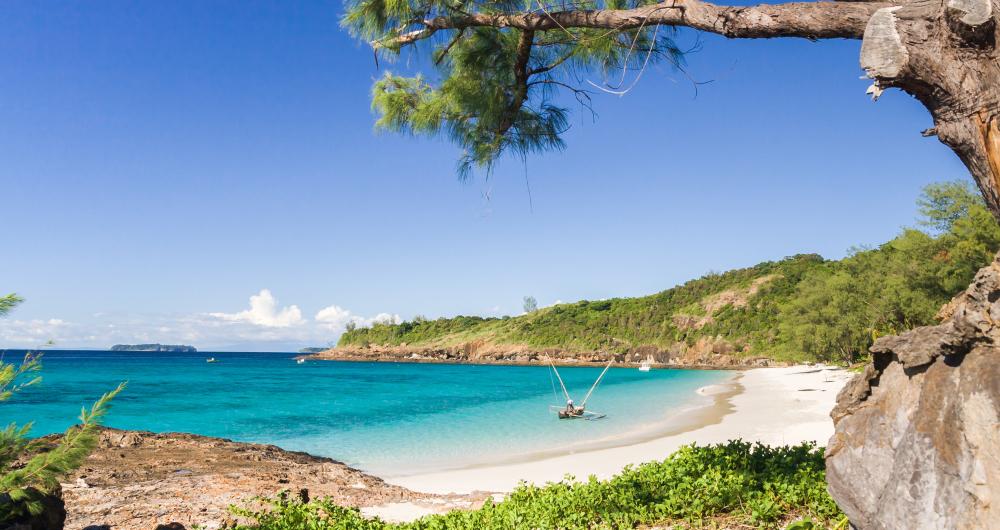In This Article
Looking for untouched tropical beaches with a wild, magical feel? Come along as I uncover the hidden beaches of Madagascar—where turquoise waters, palm-fringed coves, and untouched stretches of sand offer a peaceful, otherworldly escape unlike anywhere else. "These Madagascar beaches offer turquoise waters, coral reefs, and palm-lined shores that feel like your own private paradise."
😍 If you are in a hurry, I recommend:
- Relax on the white sands and calm waters of Nosy Be Island.
- Snorkel vibrant coral reefs at Nosy Iranja, known for its sandbar and sea turtles.
- Explore the laid-back charm and golden beaches of Ifaty on the southwest coast.
- Swim in the warm, clear waters of Île Sainte-Marie, a romantic island escape.
- Discover wild beauty and local fishing villages along the shores of Anakao.
Recommended Madagascar Beaches:
1. Sainte-Marie - Accessible by boat
♥
"Go whale watching in summer and explore romantic beaches with historic charm."
- VI
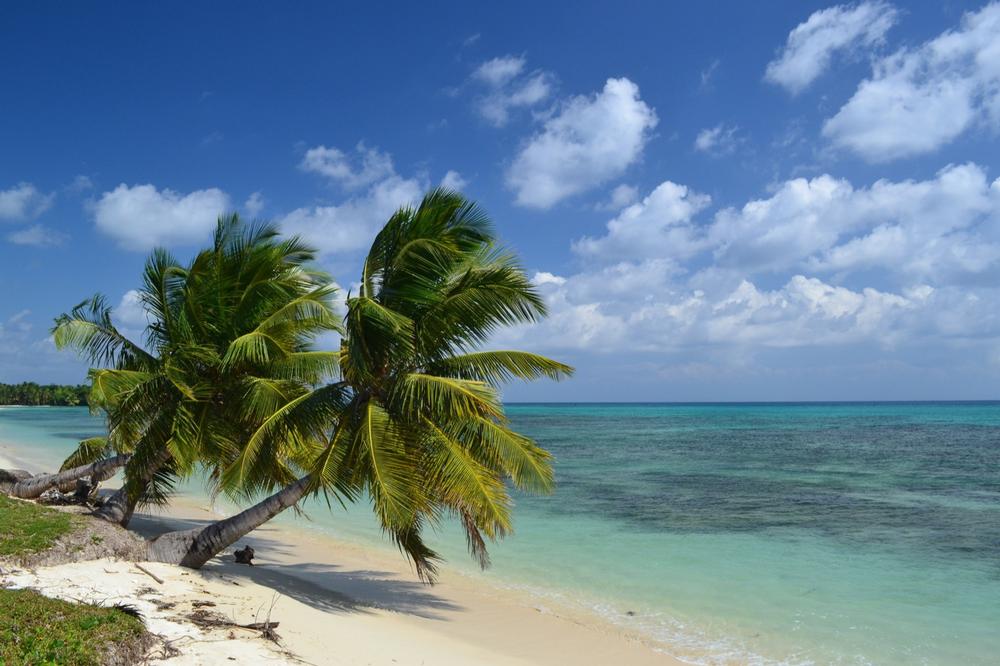
© Ariane Citron/stock.adobe.com
Location:
Sainte-Marie Island (Île Sainte-Marie), off the northeastern coast of Madagascar
Recommended For:
History lovers, pirate enthusiasts, snorkelers, and travelers in search of serene beaches with a legendary twist.
What we Love:
The soft golden sands, calm crystal-clear waters, and the fascinating pirate lore that lingers around every palm-fringed corner—complete with a real Pirate Cemetery.
- Wander through the Pirate Cemetery, where tombstones etched with skull-and-crossbones remind visitors of the island's notorious seafaring past.
- Swim and snorkel in shallow, clear waters that are ideal for spotting marine life and imagining the mysteries buried below.
- Sunbathe on quiet stretches of golden beach while listening to the waves gently lap the shore—perfect for relaxing or writing your own pirate tale.
- Explore hidden coves and tropical trails that may just lead to secret lookout points... or maybe even some long-lost treasure.
Cost:
Access to the island typically involves a small ferry or flight fee. Most beaches are free to explore. Entry to some historical areas may require a modest fee or guide tip.
Best time to visit:
April through December offers dry, sunny weather and the best sea conditions. Visit between July and September for whale watching.
Local tips:
Hire a local guide for the full pirate lore experience. Bring snorkeling gear to explore the reefs just off the beach. Don’t forget bug spray and sunblock.
Distance:
Sainte-Marie is about 8 km (5 miles) from Madagascar’s east coast, accessible by boat or a short flight from Toamasina or Antananarivo.
How to Get to Sainte-Marie:
Take a domestic flight from Antananarivo to Sainte-Marie Airport, or reach Soanierana Ivongo on the mainland and catch a ferry to the island. Many local tour operators offer package transfers.
2. Nosy Be - Accessible by air or ferry
💕
"Visit exciting island attractions and savor tropical sunsets with couples or family."
- VI
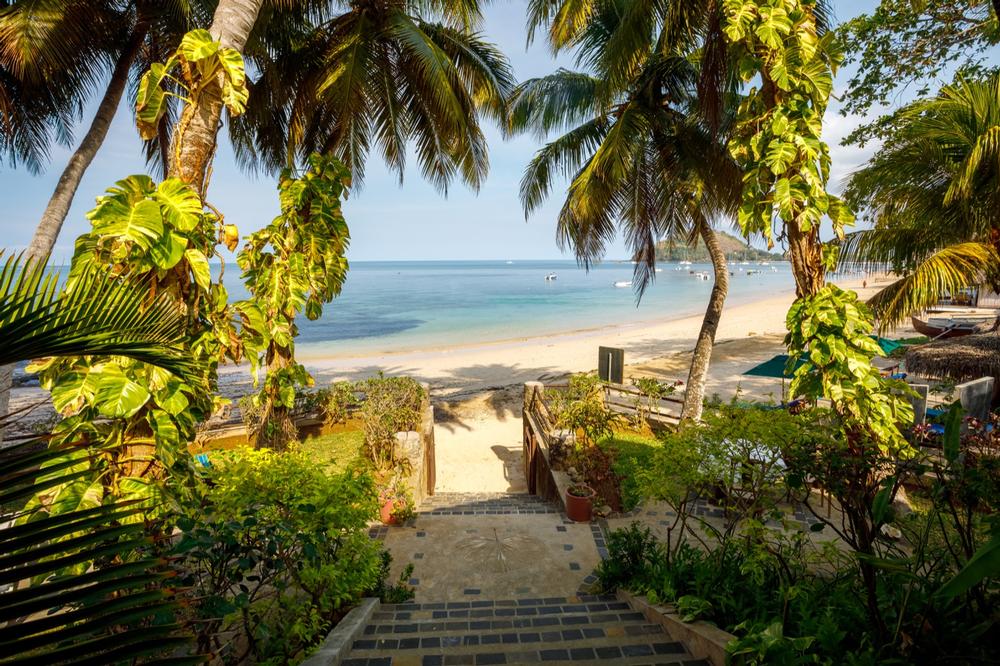
© ArtushFoto/stock.adobe.com
Location:
Nosy Be, northwest coast of Madagascar – the country’s largest and most popular beach island
Recommended For:
Sunbathers, wildlife lovers, snorkelers, and travelers looking for a tropical beach destination that blends relaxation with adventure.
What we Love:
The warm golden sands, thrilling wildlife experiences, top-notch whale watching, and the overall energy of Madagascar’s premier island escape.
- Sunbathe on expansive stretches of sand while enjoying the soothing rhythm of the Indian Ocean—ideal for long, lazy afternoons.
- Explore the island’s lush jungles for a chance to spot lemurs, chameleons, and other endemic Madagascan wildlife.
- Watch for whales during the summer season—Nosy Be is a hotspot for humpback sightings from July to September.
- Join the festive atmosphere—this is Madagascar’s most visited island, so expect plenty of restaurants, bars, and beachside energy.
Cost:
Public beach access is free. Tours, wildlife excursions, and whale-watching trips vary in price based on the provider and season.
Best time to visit:
May to October for dry weather and clear seas. July to September is best for whale watching. Visit early in the day for quieter beach time before the crowds arrive.
Local tips:
For a quieter experience, head to nearby beaches like Andilana or take a short boat ride to one of the smaller islets. Pack mosquito repellent and stay hydrated when exploring inland trails.
Distance:
Located off Madagascar’s northwest coast. The island is about 8 km from the mainland and easily accessible by air or ferry.
How to Get to Nosy Be:
Fly directly to Fascene Airport (Nosy Be) from Antananarivo or other international hubs. Alternatively, ferries and boats connect Nosy Be to the port town of Ankify on the mainland.
Romantic Madagascar Beaches:
3. Tsarabanjina - reachable by boat or helicopter
I like:
"Relax on romantic sands and enjoy an exclusive, quiet beach getaway."
- VI
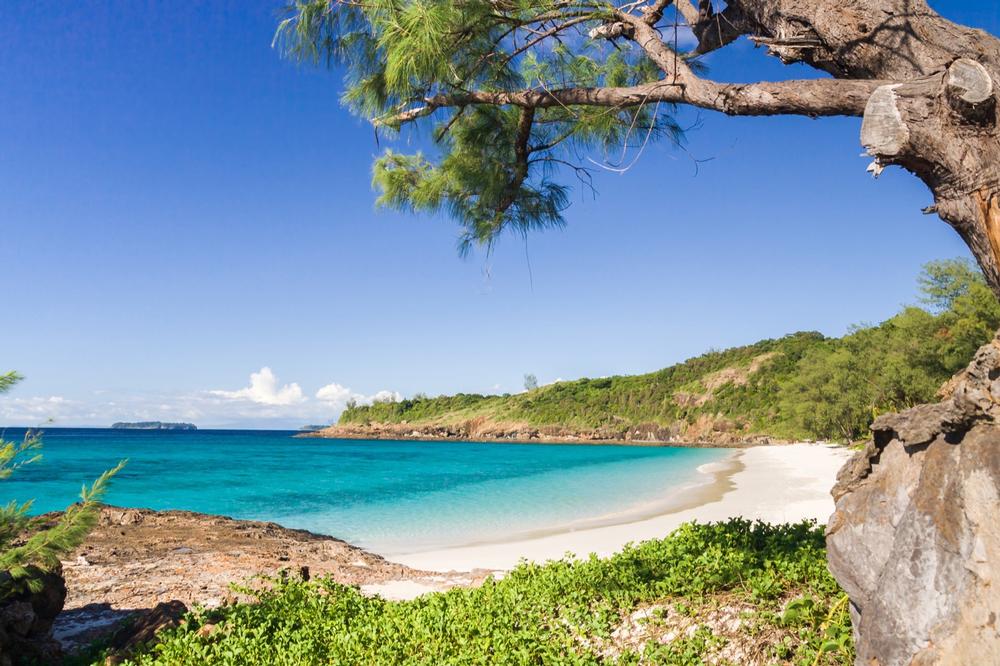
© Pierre-Yves Babelon/stock.adobe.com
Location:
Tsarabanjina Island, northwest of Madagascar – part of the Mitsio Archipelago in the Indian Ocean
Recommended For:
Couples, honeymooners, solo travelers, and anyone seeking a private, peaceful, and breathtakingly beautiful beach escape.
What we Love:
The powdery white sand, vivid turquoise waters, and the island’s dreamlike atmosphere that makes every moment feel serene and special.
- Sunbathe on untouched shores with only the sound of the sea and gentle breeze—perfect for true relaxation or romantic beach moments.
- Swim or snorkel in crystal-clear waters teeming with tropical marine life—visibility is excellent and the setting is pristine.
- Stay at the island’s luxury eco-resort, where you’ll enjoy barefoot luxury and personalized service amid a natural paradise.
- Wander the island trails or simply soak in the solitude—there’s little else to do here but embrace the calm and beauty.
Cost:
Tsarabanjina is a private island, typically accessed through all-inclusive resort bookings. Expect premium pricing for the exclusivity and experience.
Best time to visit:
April through November for dry, sunny weather and calm seas. Sunsets here are particularly unforgettable.
Local tips:
Book in advance as the island’s accommodations are limited. Pack light, breezy clothing and water-friendly footwear. Don’t miss the chance to snorkel directly off the beach.
Distance:
Located about 40 km (25 miles) northwest of Nosy Be, reachable by boat or helicopter transfer arranged through resorts.
How to Get to Tsarabanjina:
Fly to Nosy Be’s Fascene Airport, then transfer via speedboat or helicopter to Tsarabanjina. Most visits are arranged through the island’s resort, which includes roundtrip transfers.
4. Manafiafy - 2-hour drive from Fort Dauphin
♥
"Discover unusual coastal forests and walk along peaceful, eco-friendly shores."
- VI
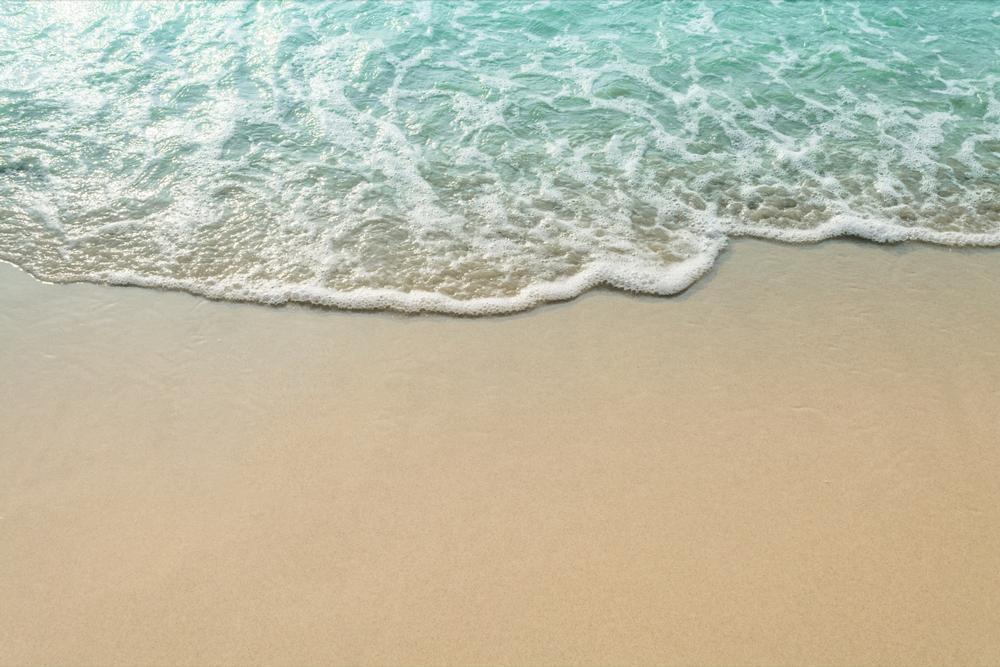
© Ammak/stock.adobe.com
Location:
Manafiafy, southeastern coast of Madagascar – near Fort Dauphin (Taolagnaro)
Recommended For:
Off-the-beaten-path explorers, nature lovers, couples, and travelers seeking tranquil beauty, marine wildlife, and eco-adventure in a secluded setting.
What we Love:
The peaceful atmosphere, pristine sands, low visitor traffic, and the opportunity to dive, whale-watch, and truly connect with nature in a secluded, intimate location.
- Relax on soft sands in near solitude—Manafiafy’s remoteness makes it one of Madagascar’s best-kept secrets.
- Stay at the beach’s only eco-lodge, where your experience is designed to be immersive and low-impact, blending luxury with sustainability.
- Dive beneath the waves on a guided scuba tour—Manafiafy offers rich marine biodiversity and crystal-clear waters.
- Watch for humpback whales during migration season (June to November) with organized tours departing directly from the shore.
Cost:
Access to the beach is free, though activities and lodging are typically arranged through the Manafiafy Beach & Rainforest Lodge and vary in price.
Best time to visit:
June to November for whale watching and dry, pleasant weather. It's also the best time for exploring the coastal rainforest trails nearby.
Local tips:
Pack binoculars for whale-watching, and bring essentials with you—there are no shops nearby. If you stay at the lodge, ask about night walks for spotting lemurs and other nocturnal wildlife.
Distance:
Located about 50 km northeast of Fort Dauphin (Taolagnaro)—accessible by a 2-hour drive through scenic rainforest and coastal terrain.
How to Get to Manafiafy:
Fly into Fort Dauphin Airport, then take a private 4x4 transfer arranged by the lodge or through local travel providers to Manafiafy. The route is rugged but rewarding.
Family Madagascar Beaches:
5. Mitsio Islands - accessible by boat
Among my top 5:
"Explore exciting island scenery and admire dramatic rock formations by boat."
- VI
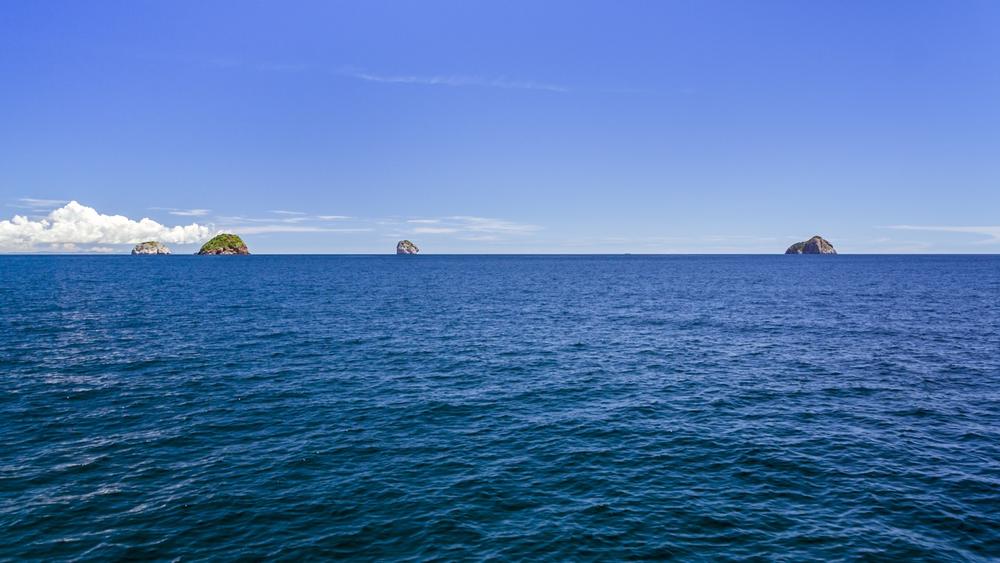
© Pierre-Yves Babelon/stock.adobe.com
Location:
Mitsio Islands, northwest of Madagascar – part of the Nosy Be Archipelago in the Mozambique Channel
Recommended For:
Island-hoppers, luxury beach seekers, hikers, photographers, and anyone enchanted by dramatic rock formations and serene turquoise waters.
What we Love:
The striking basalt rock formations, silky white sands, crystal-clear waters, and the peaceful vibe that earns the Mitsio Islands the nickname “Maldives of Madagascar.”
- Wander along the beach beside volcanic rock pinnacles—especially the famed “Organ Pipes” of Grande Mitsio, a natural wonder formed from columnar basalt.
- Swim in mesmerizing turquoise waters that rival the Indian Ocean’s best—and often with barely a soul in sight.
- Stay at one of a handful of boutique accommodations, perfect for quiet luxury or romantic getaways surrounded by nature.
- Hike the scenic island trails through tropical vegetation for panoramic views, birdwatching, and peaceful moments in untouched terrain.
Cost:
Beach access is free. Lodging and excursions vary in price based on the island and season. Boat transfers from Nosy Be or Ankify are an added cost.
Best time to visit:
April through November offers dry, sunny conditions and calm seas. Visit early in the day for soft light on the rock formations and best snorkeling clarity.
Local tips:
Bring your own snorkel gear and hiking shoes—amenities are limited. Arrange boat transfers in advance and confirm if your hotel offers packages that include transportation and meals.
Distance:
About 55 km (34 miles) north of Nosy Be—accessible by boat in approximately 2–3 hours depending on sea conditions.
How to Get to the Mitsio Islands:
Fly into Nosy Be’s Fascene Airport, then take a charter boat from Nosy Be or Ankify. Most resorts and tour operators offer full-day or overnight packages including transport, meals, and guided hikes.
6. Anakao Beach - reached via a combination of road and boat
♥
"Go surfing or snorkeling and enjoy an affordable beach trip in the south."
- VI
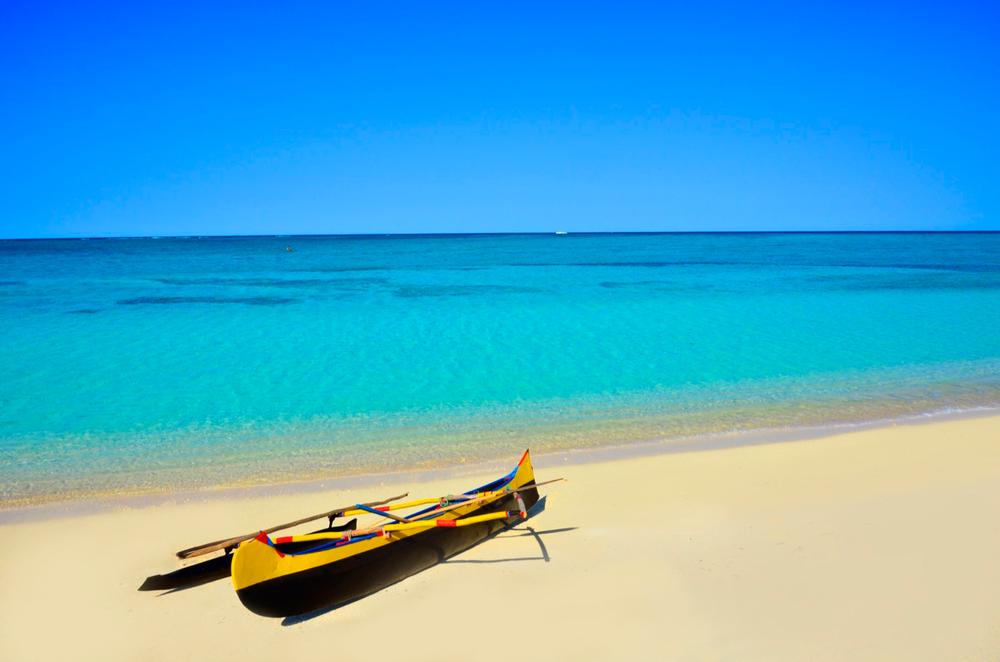
© Simon Dannhauer/stock.adobe.com
Location:
Anakao, southwest coast of Madagascar – near the city of Toliara (Tuléar)
Recommended For:
Families, snorkelers, relaxed beachgoers, and travelers looking for a traditional fishing village vibe with natural charm and calm waters.
What we Love:
The peaceful setting, golden sand stretching far into the distance, gentle waves, and the authentic Malagasy village atmosphere that adds cultural richness to the coastal experience.
- Swim and splash in the calm, shallow waves—perfect for kids and casual beach lovers looking to relax and cool off.
- Snorkel just offshore to discover colorful fish and marine life that thrive in the reef-protected waters around Anakao.
- Picnic on the wide, uncrowded sand—an ideal spot for beach games, sandcastle building, and soaking up the serene surroundings.
- Dine in the nearby village, where you’ll find freshly caught seafood served with Malagasy flair in simple beachfront eateries.
Cost:
Free beach access. Local tours and snorkeling equipment rentals may be available through hotels or guides in town.
Best time to visit:
May to October for dry and sunny weather with ideal snorkeling conditions. Early morning and late afternoon provide the softest light for photography.
Local tips:
Bring cash, sunscreen, and snorkeling gear—amenities are limited. Pack a camera to capture the colorful boats and coastal views. Ask locals about boat trips to nearby Nosy Ve island for an extra adventure.
Distance:
About 35 km south of Toliara—reached via a combination of road and boat (roughly 1–2 hours total depending on tide and transport method).
How to Get to Anakao:
From Toliara, travel south via 4x4 to the coast or arrange a boat transfer across the bay. Many lodges and tour companies in Toliara offer organized transport and day trips to Anakao.
7. Madagascar Map with Beaches & Conclusion
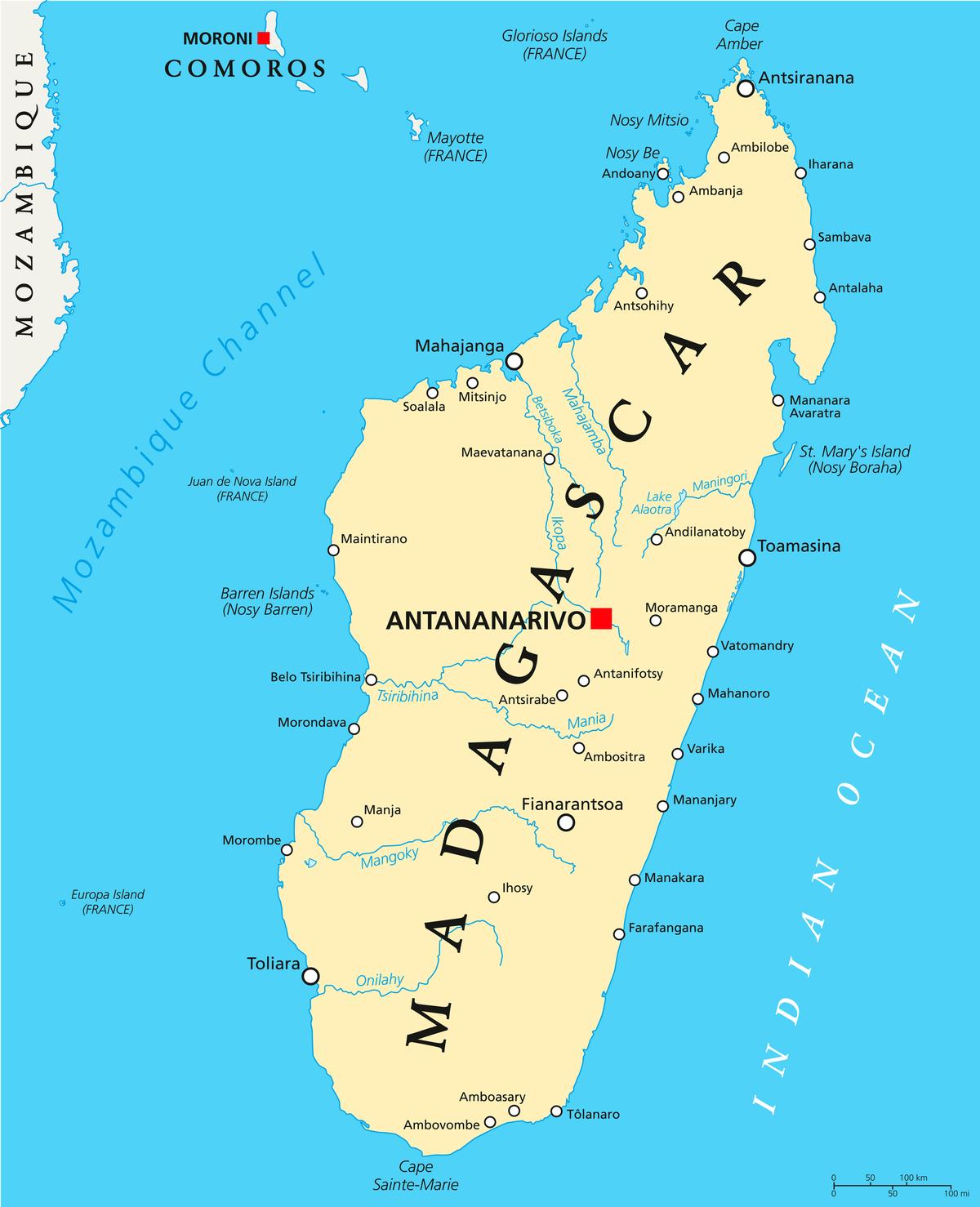
© Peter Hermes Furian/stock.adobe.com
Not only are the beaches beautiful here, but Madagascar also enjoys some wonderfully warm weather, with lots of sunshine and high temperatures witnessed all around the nation, providing the perfect conditions for locals and tourists to spend plenty of time outdoors, soaking up the local culture and enjoying the lush landscapes and stunning coastal spots of this magical African nation.
If you’re planning a trip to Africa, Madagascar needs to be a part of your itinerary.
Surrounded on all sides by the crystal clear waters of the Indian Ocean, Madagascar's beaches are a breathtaking sight to behold.
📔 I get asked this a lot so I decided to include it:
-
Where is Madagascar located?
-
Madagascar sits off the eastern coast of mainland Africa, in the vast waters of the Indian Ocean.
-
Why is Madagascar famous for its biodiversity?
-
Renowned for its unique biodiversity, the island is home to many plants and animals that can't be found anywhere else in the world, making it a highly popular vacation destination for wildlife enthusiasts and nature lovers.
-
What makes Madagascar a special travel destination?
-
There are many popular touristic spots all around Africa, but Madagascar stands out as one of the most special for a wide variety of reasons, including its rich ecosystems and stunning landscapes.
-
Does Madagascar have beautiful beaches?
-
Madagascar is home to some of Africa’s most highly rated beaches, offering pristine shores and breathtaking coastal views.
🌤 Best Time to Visit Madagascar Beaches
- May to October – Best overall time with dry, sunny weather perfect for swimming, snorkeling, and beach relaxation.
- July to September – Ideal for whale watching, especially around Île Sainte-Marie and other northeastern beaches.
- May & June – Shoulder season with lush scenery and fewer crowds—great for peaceful beach escapes.
- November to April – Hot and rainy season, with cyclones possible—some areas remain beautiful but less predictable.
- Year-Round – Stunning beaches like Nosy Be, Anakao, and Ifaty offer tropical beauty and island vibes in every season.
Getting to Madagascar
- By Air
- The easiest way to get to Madagascar is to fly into Ivato International Airport (TNR) in Antananarivo.
- There are direct and connecting flights via Paris, Nairobi, and Addis Ababa.
- By Sea
- Cruise ships occasionally stop at ports like Toamasina and Nosy Be.
- Cargo and passenger ships connect Madagascar with nearby islands such as Réunion and Mauritius.
- By Charter Flight
- Private charters are available to smaller airports such as Nosy Be or Antsiranana.
- Charter flights offer flexibility but are significantly more expensive.
🖋 How did I do?
Is the article too broad, too narrow, or just right ? Do you like the presentation of photos and text? Let me know in the comments! If you want to see more in this location, I can put it on my editorial calendar. I'm listening!
Plan Your Trip


